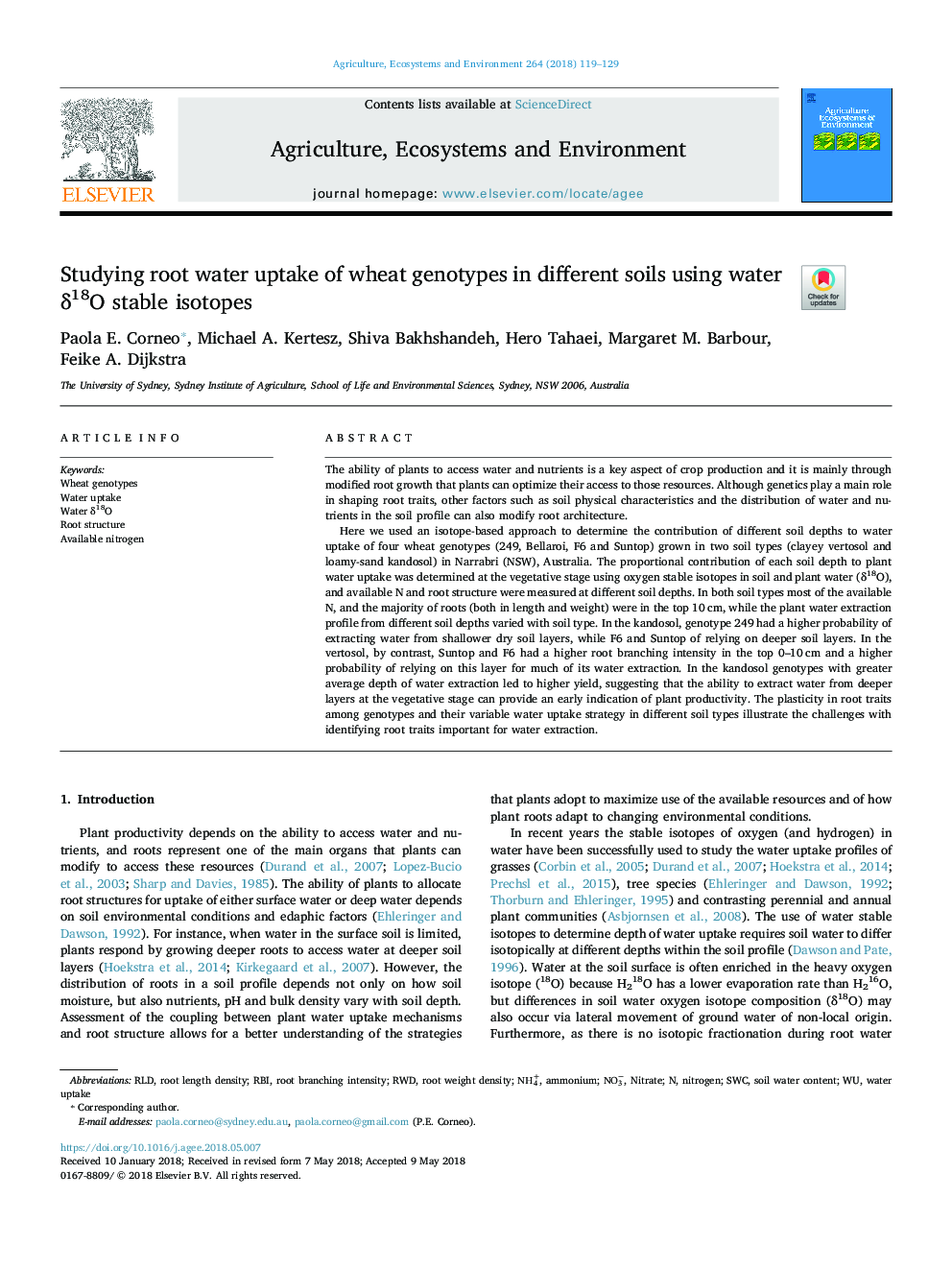| Article ID | Journal | Published Year | Pages | File Type |
|---|---|---|---|---|
| 8487030 | Agriculture, Ecosystems & Environment | 2018 | 11 Pages |
Abstract
Here we used an isotope-based approach to determine the contribution of different soil depths to water uptake of four wheat genotypes (249, Bellaroi, F6 and Suntop) grown in two soil types (clayey vertosol and loamy-sand kandosol) in Narrabri (NSW), Australia. The proportional contribution of each soil depth to plant water uptake was determined at the vegetative stage using oxygen stable isotopes in soil and plant water (δ18O), and available N and root structure were measured at different soil depths. In both soil types most of the available N, and the majority of roots (both in length and weight) were in the top 10â¯cm, while the plant water extraction profile from different soil depths varied with soil type. In the kandosol, genotype 249 had a higher probability of extracting water from shallower dry soil layers, while F6 and Suntop of relying on deeper soil layers. In the vertosol, by contrast, Suntop and F6 had a higher root branching intensity in the top 0-10â¯cm and a higher probability of relying on this layer for much of its water extraction. In the kandosol genotypes with greater average depth of water extraction led to higher yield, suggesting that the ability to extract water from deeper layers at the vegetative stage can provide an early indication of plant productivity. The plasticity in root traits among genotypes and their variable water uptake strategy in different soil types illustrate the challenges with identifying root traits important for water extraction.
Keywords
Related Topics
Life Sciences
Agricultural and Biological Sciences
Agronomy and Crop Science
Authors
Paola E. Corneo, Michael A. Kertesz, Shiva Bakhshandeh, Hero Tahaei, Margaret M. Barbour, Feike A. Dijkstra,
